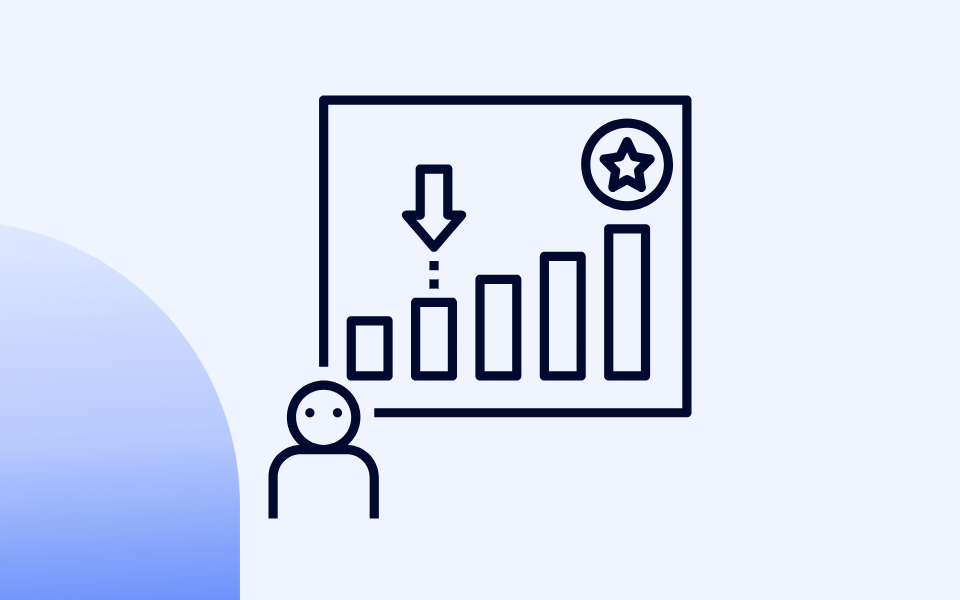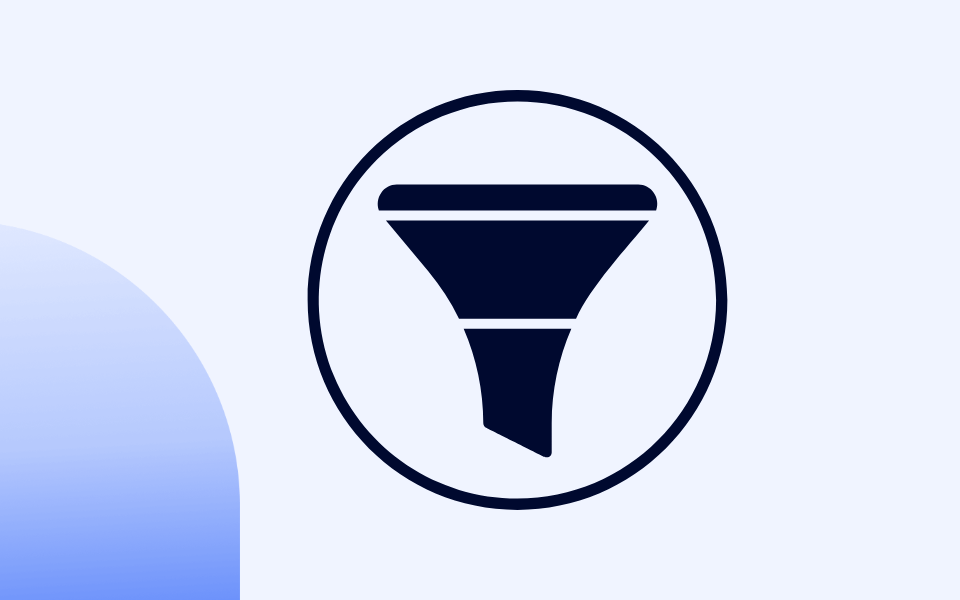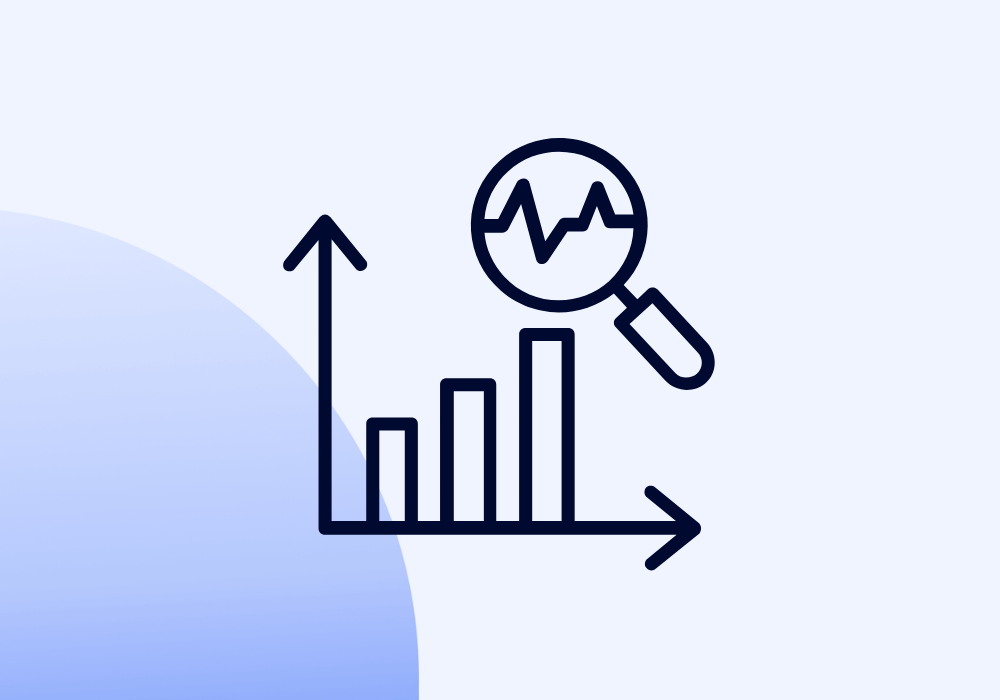How HubSpot Lead Scoring Helps Identify Your Best Leads (2025)
Lead handoff optimization for long sales cycles

Do your salespeople complain about marketing-generated leads not being qualified enough and that they lack the intent to buy?
If your company is generating leads from ebooks and webinars that never close, there are likely issues with your lead handoff process that affects your ability to grow.
This article will cover how to optimize your process of generating better leads, how to reduce waste in your marketing, and pass more SQLs to your sales department.
You will learn:
- What is lead handoff optimization?
- Start with great marketing
- Throw away the funnel
- Create a shared definition of an SQL
- Make information about leads shared
- Leverage automation and workflows
- Personalize your sales outreach
- Track the right metrics
What is lead handoff optimization?
Lead handoff is the process of handing over a lead generated by marketing to the sales team in order to qualify and close the lead into becoming a paying customer.
The process for handing off a lead and closing a customer should be straightforward, but for most companies, this process is either broken or nonexistent.
Does this scenario sound familiar?
Your salespeople are using a separate CRM, while marketing is using a disparate set of tools to send email newsletters, publish content on social, and do reporting.
There are no integrations between systems, the flow of information between departments is minimal, and leads are stored in separate spreadsheets.
Generating quality leads can be a challenge in itself, but if the lead handoff process is broken, you risk all those opportunities going to waste because of poor follow-up.
The result of having no shared definition of a lead, lack of automation, and a disparate set of tools are higher acquisition costs, misalignment, and fewer deals.
How do you fix it?
1. Start with great marketing
In longer sales cycles, buyers need time to evaluate different solutions, get buy-in from other stakeholders, and gather enough information before making a decision.
It can be challenging to solve for time, need, and budget when a sales cycle is long. If the prospect is not ready, there is very little a salesperson can do to change that.
When you cannot get a prospect to commit there and then, they probably just need more time and reassurance before they decide to take the next step with you.
This is why you need a content strategy that is tailored to the questions and problems of each person in your ICP at each stage of their buying process.
Buyers today prefer a self-service approach where they can go on your website to get their answers to questions about pricing, features, or see your case studies.
For each touchpoint a potential customer has with your company, there should be content that gives them answers to questions and reasons to move forward with you.
Understand that marketing works on a completely different timeline than sales and that there is a lot of education that needs to be done before a buyer contacts you:
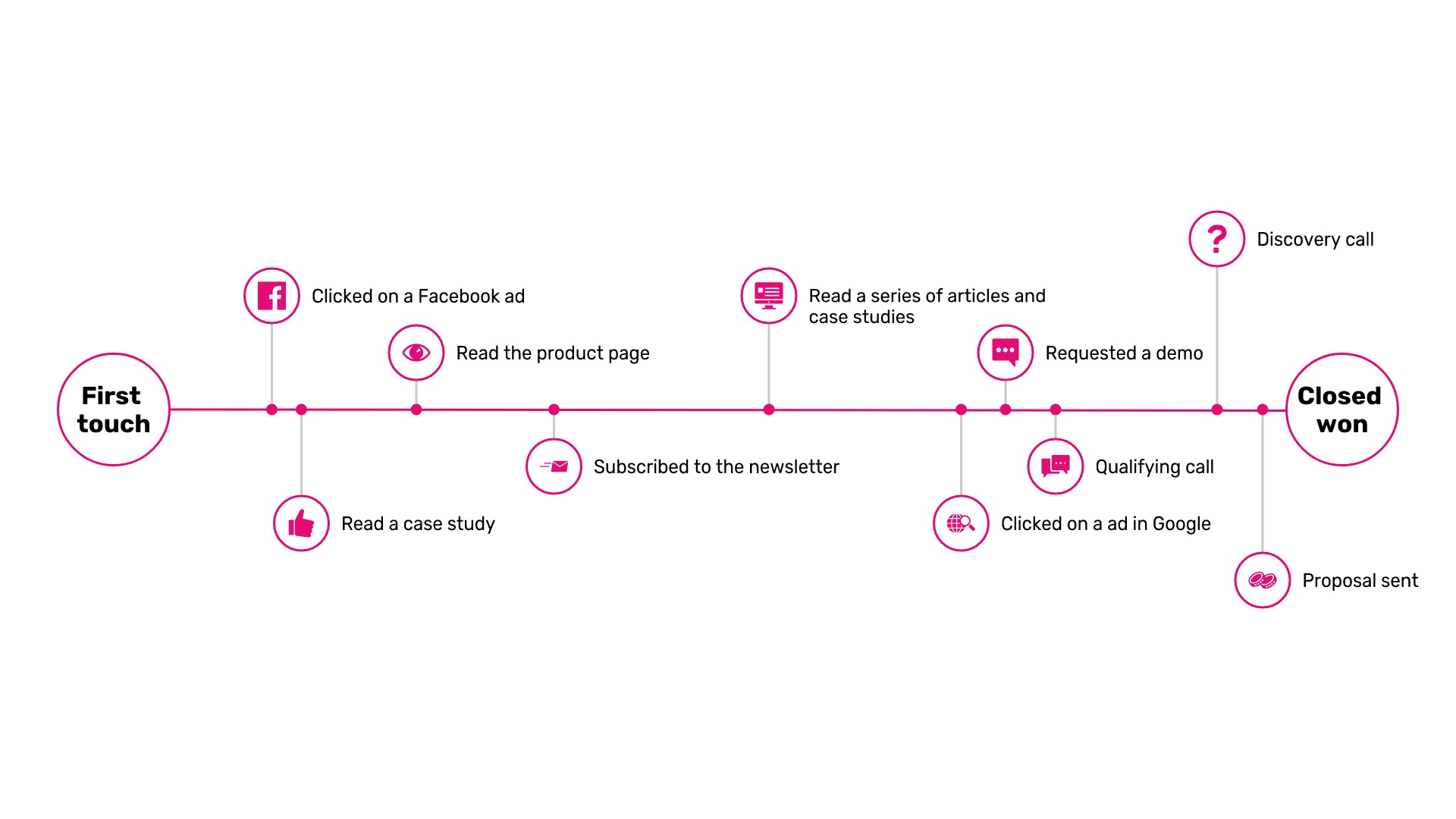
Buyers can potentially have hundreds of touchpoints with your company over a long period of time before they even talk to someone from your sales team.
When you do marketing well, buyers will start engaging with your company much earlier in their buying process through advertising and content on your website.
This results in your company and product becoming top of mind when the buyer has the need, timing, and budget. They will then reach out and become an inbound lead.
The result?
You will get more leads who will come through search who request a demo or pricing information, and your sales cycle will be perceived as much shorter than normal.
2. Throw away the funnel
The second step to optimizing your lead handoff process is to filter out any noise that fills your pipeline with unqualified MQLs that lack authority, buying intent, and budget.
Even if marketing is generating awareness and inbound leads, you still need to take steps to ensure that the leads you pass to sales are of high quality.
The typical approach to generating leads is the waterfall approach. This approach focuses on generating leads with gated content for your target audience.
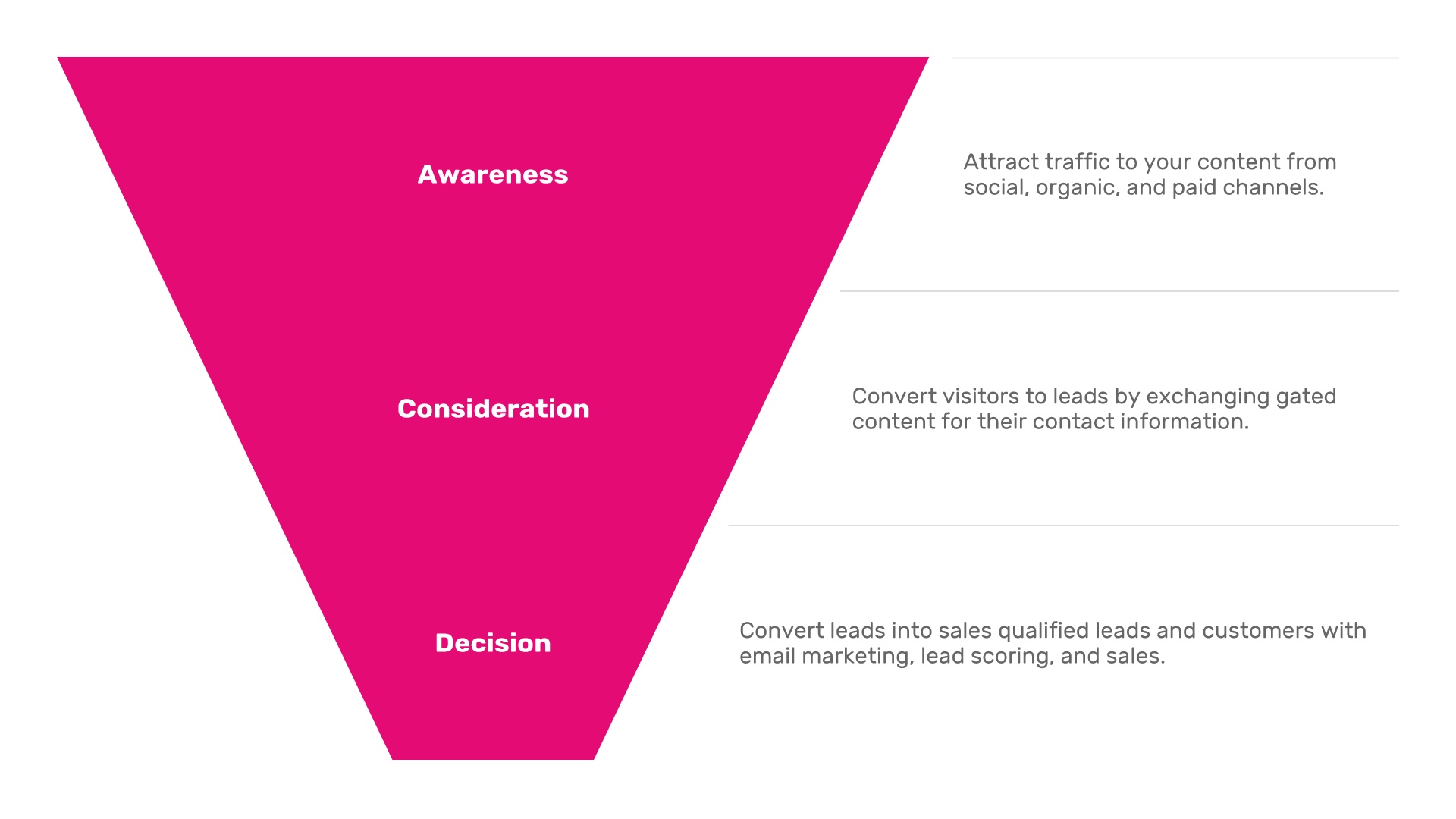
An outdated formula for growth
MQLs generally have a low conversion rate to SQL, and it is a model that decreases sales productivity as much time is spent following up with unqualified leads.
My suggestion is to stop overcomplicating your marketing by removing the consideration stage and categorize your leads into two buckets.
The first bucket is leads who have the intent, fit, and budget to move forward. They have indicated an interest in your product by requesting a demo or pricing information.
The second bucket is leads who are not yet ready to buy and who need more information. These are the people who attend your webinars and read your content.
This changes your focus from generating a high volume of low-quality leads and instead starts to focus on converting the 1% that is ready to buy in the near future.
This means that you should stop investing time and resources into following leads that have converted on content downloads or registered for a webinar.
Your lead handoff process should be centered around the primary action you want visitors to your website to perform such as requesting a demo or pricing.
You will likely pass fewer leads to sales every month, but they will be more qualified, have the intent to buy, and they will not waste your salespeople's time.
3. Create a shared definition of an SQL
Marketing and sales need to have a shared definition of an ideal customer profile (ICP) and what criteria that need to be met before a lead can be passed to sales.
Contact information does not make equal a lead. A lead is someone from your ICP that is proactively engaging with your company and is looking for more information.
A sales-qualified lead (SQL) is a lead from your ICP that has requested a demo or pricing information from you, and that is then passed to a salesperson.
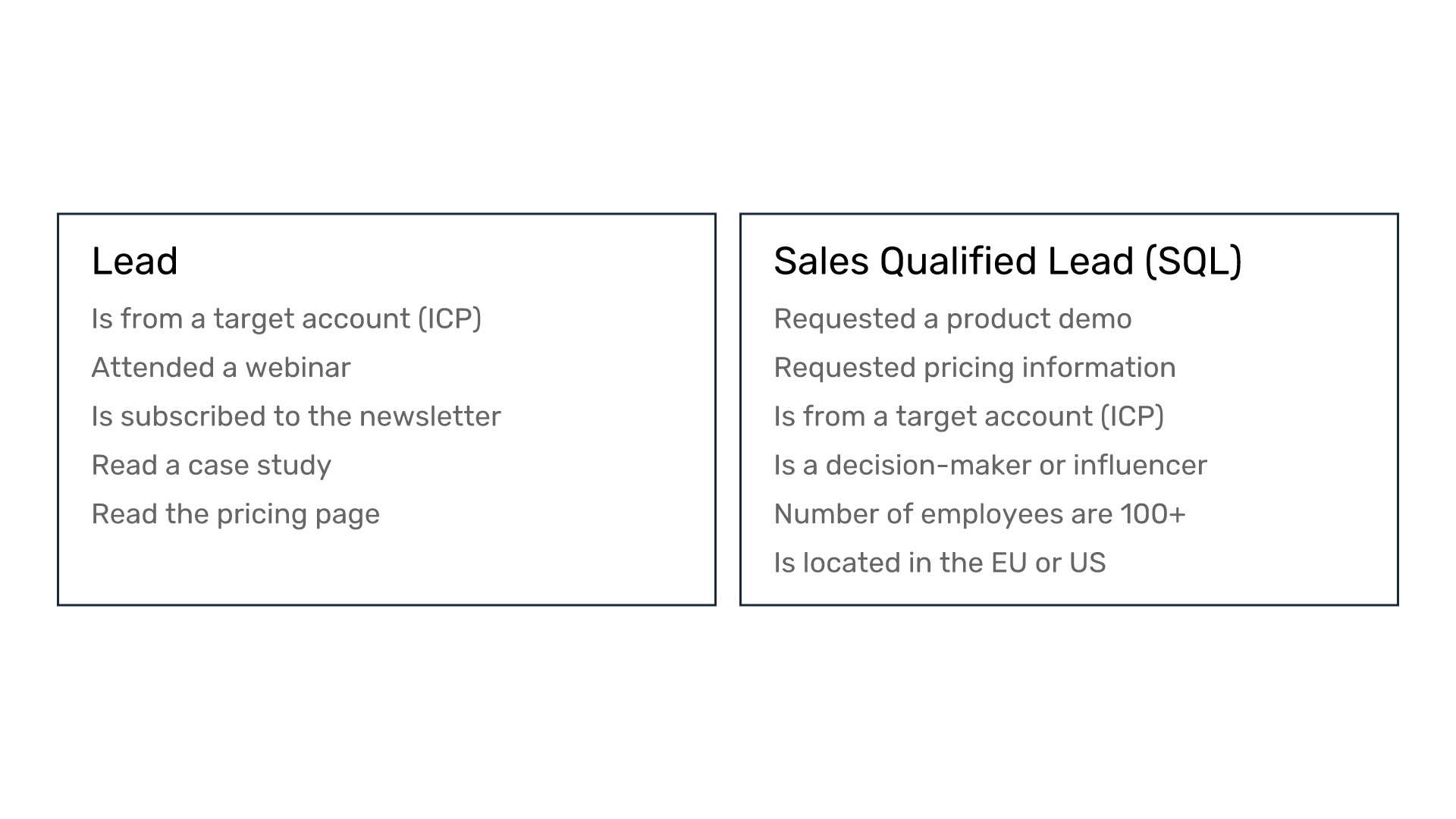 Instead of incentivizing the marketing team to generate a high volume of leads from gated content, have them focus on generating fewer, but qualified leads for sales.
Instead of incentivizing the marketing team to generate a high volume of leads from gated content, have them focus on generating fewer, but qualified leads for sales.
This simply requires sales and marketing to create some strict rules about what types of leads should be passed to sales:
- Is this lead from one of our target accounts?
- Are they able to influence the buying decision?
- Are they from a vertical we serve?
- Have they filled out our demo request form?
- Are they using a competitor’s product?
This simplifies your decision-making. Is the lead qualified or not based on your criteria? If not, you can simply pass the lead back to marketing and continue educating them.
4. Make information about leads shared
After creating a shared definition of an SQL that will be passed to sales, you need to make information about each contact easily accessible for both sales and marketing.
You want everyone to know when a lead that fits your criteria converts on your website. This is most easily done by using a CRM system such as HubSpot.
You can also integrate most MAPs with CRM platforms such as Salesforce and Microsoft CRM through either native integrations or solutions such as PieSync.
A shared CRM system helps you to:
- Input notes with important information for sales
- Assign ownership of a lead or company automatically
- Automatically create tasks for a salesperson
- Rotate leads based on availability and fit
Whether you have an all-in-one solution or you have a separate MAP and CRM, you need to have two-way sync data between apps.
Not only will it save you hours of manual data entry, but it will give each salesperson information about the background and behavior of each contact.
This two-way sync will make it easy to pick up where marketing lets off, and it is possible to pass a lead back to marketing if the lead is not yet ready to buy.
5. Leverage automation in HubSpot
If you do not respond in a timely fashion, a potential customer can easily research other companies and get a demo or pricing information from your competitor.
That is why you need to leverage automation to avoid situations where leads are not being assigned to a salesperson quickly so that they can follow up quickly.
Use lifecycle stages and lead status to get an indication of where the buyer is in their buying process, and how far sales have come in the process of qualifying a lead.
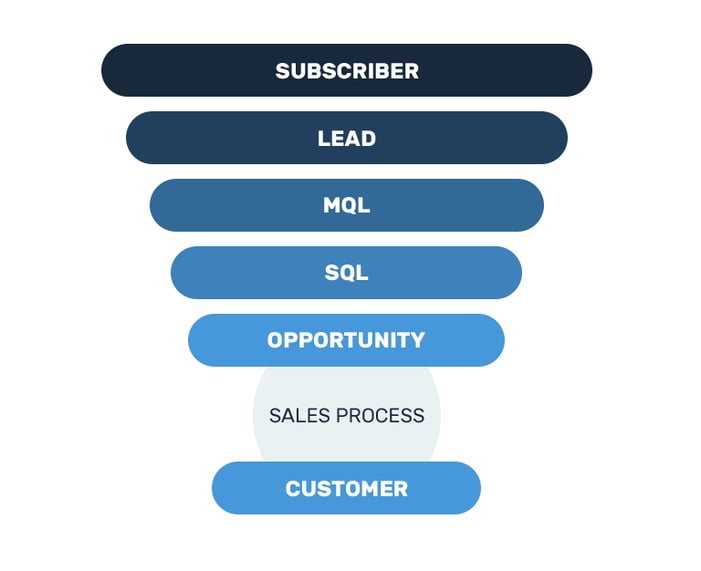
Lead status is another helpful property that is used to determine how far sales have come in the process of qualifying a sales qualified lead.
This will help you to ensure that no sales-qualified lead is forgotten. When using a solution like HubSpot, SQLs can be segmented into the following lead statuses:
- New = The SQL recently converted and is not assigned.
- Open = The SQL does not have an owner assigned.
- In Progress = There is activity logged on the SQLs contact record.
- Open Deal = There has been opened a deal in the CRM associated with this SQL.
- Unqualified =The SQL did not meet all criteria.
- Attempted to Contact = Sales has not been able to get in touch.
- Connected = Connection established with the SQL.
- Bad Timing = The SQL is interested, but it was not the right timing.
These properties can be used as triggers that will notify a salesperson through automatic task creation, Slack notifications, internal emails or form submissions.
Say a lead requested a demo in the last hour. Their lifecycle stage is automatically changed to Sales Qualified Lead (SQL) and their lead status is set to New.
This combination of lifecycle stage and lead status then triggers an internal notification to a salesperson who reaches out to that SQL and qualifies them.
When a salesperson has qualified the SQL, they turn into an Opportunity in the CRM and their lead status becomes In progress.
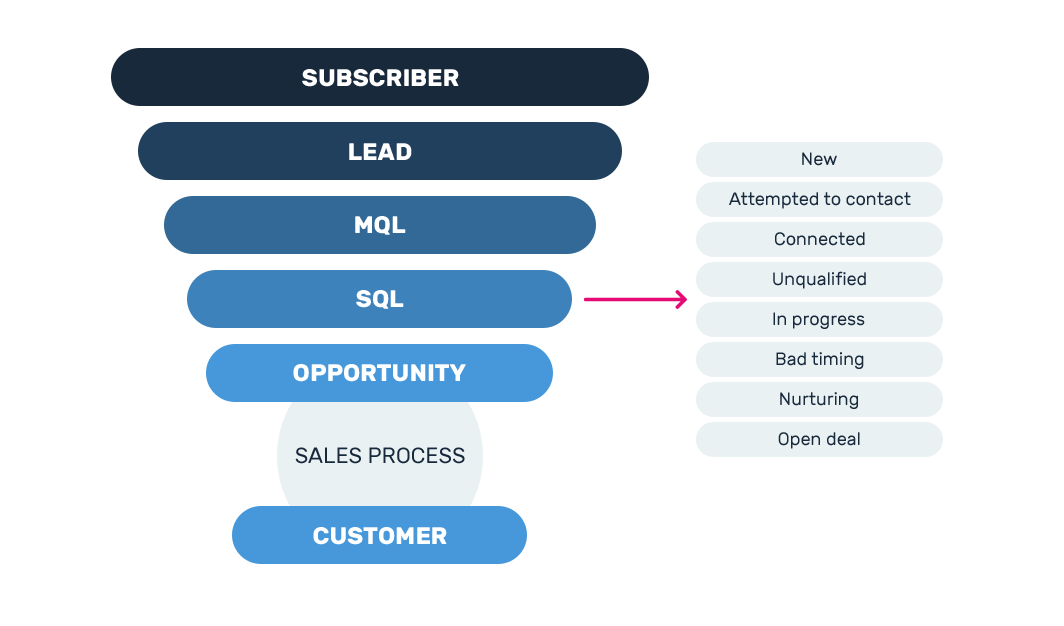
This whole process is mostly automated, and you can use the lifecycle stages and lead status properties to segment your leads into different lists and views based.
When you also can automatically assign ownership to a lead, you will make the task of following up with the right lead at the right time much easier for your sales team.
The next step is improving the 1:1 communication between sales and the prospect, increase your connect and response rates, and get more meetings.
6. Personalize your outreach
A crucial part of the lead handoff process is when a salesperson connects with the prospect for the first time. Now it is important that you make a good first impression.
In addition to leveraging software and automation, a great lead handoff process also requires the personal touch from a salesperson to close the deal.
There are a number of ways to improve your first outreach:
- Spend more time researching the prospect on their website, LinkedIn profile, and news sites. This will improve your response and connect rates later on.
- Try to determine the fit and value of this prospect. You need to match your time investment with the value of each prospect.
- Personalize your outreach. Instead of a text email, use Vidyard to record a video of yourself. Use the information you gathered early on to make it more personal.
- Make it easy to say yes to a meeting. Send a link to your meeting link and ask for a low time commitment. This makes it easier to book a meeting or say no.
By personalizing your first message to each prospect, you increase your chance of getting a response. This ensures that the first time is not the last time.
7. Track the right metrics
After implementing the steps above, you should track the correct metrics to ensure your lead handoff process is working properly and improving month over month.
By having the right dashboards and reports, you can get updated metrics each day that lets you measure the effectiveness of the lead handoff process.
- The time from the first touch to a meeting is booked
- The conversion rate from SQL to meeting
- The conversion rate from SQL to Opportunity
- Time from the first conversion to follow-up
- The number of leads passed to sales
- Revenue generated from inbound leads
There are many steps in the lead handoff process, and the right metrics can tell you if you need to change your lead definitions or if you need to improve your sales process.
By having a dashboard built into your CRM platform, you can easily review these metrics on a weekly or monthly basis and help your team improve close rates.
Conclusion
Having a poorly optimized lead handoff process will result in a higher acquisition cost as you invest resources into acquiring opportunities that are not followed up in time.
Do not pour money into a leaking bucket. Get your lead handoff process right from the beginning by simplifying the funnel, investing in marketing, and leverage automation.
Attempt being your own prospect as well. Open up your browser in incognito mode and go through your own website and sales process.
Ask yourself:
- How easy and quick is it to get in contact with sales?
- Where is there friction? Where do you feel yourself drop off?
- Are your salespeople following up quickly?
If your lead handoff process is not optimal, follow the steps above. It will help you close more deals faster, reduce acquisition costs, and grow faster.
